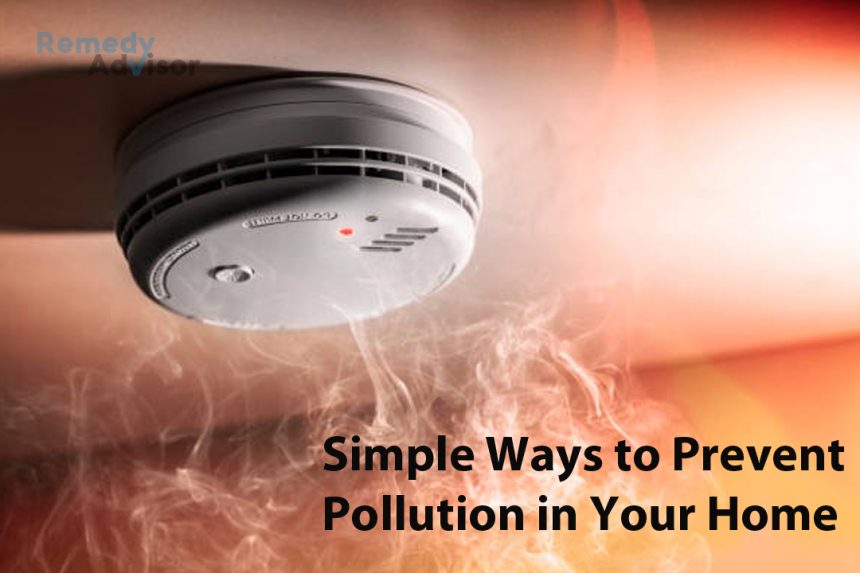Environmental pollution can cause all sorts of ailments, including asthma, allergies, immune system suppression and even cancer.
Smog, toxic-waste dumps, chemical-laden streams and other examples of outdoor pollution get lots of media attention. But for most of us, pollutants inside the home pose much bigger threats to our health.
Here’s how to create an environmentally safe home…
Prohibit smoking
Establish a firm no-smoking policy. That goes for pipe and cigar smoking as well as for cigarette smoking.
If someone in the family smokes and is unable or unwilling to quit, make sure he/she smokes outside. To discourage smoking by guests, get rid of ashtrays and consider posting a sign that reads NO SMOKING PLEASE.
In addition to raising your risk for cancer and heart disease, secondhand smoke aggravates asthma and raises children’s susceptibility to sore throats and ear infections. Cancer-causing tars in tobacco smoke cling to curtains and upholstered furniture long after cigarettes have been extinguished.
Don’t wear shoes
If you wear shoes in your home, you track in pesticides, lead and other toxins each time you come home. These chemicals can be difficult to clean up especially if they’re deposited on carpets.
In Japan and many other countries, it’s customary for house guests and occupants to leave their shoes at the door. Follow their example. Go barefoot or wear slippers, if you prefer.
Control mold
Household mold can cause everything from eczema and asthma to joint pain, fatigue and headaches. Some molds excrete tricothecenes, toxic compounds that suppress the immune system and cause leukemia.
Molds flourish in moist air. Use a dehumidifier to keep relative humidity indoors below 50%. Simple models are available for about $100 at hardware stores.
Make sure your basement and attic are well ventilated. Install exhaust fans in your kitchen and bathrooms to get rid of moisture that builds up during cooking and showering.
Do not install carpeting in bathrooms, basements or other areas where dampness or high humidity is a problem.
Check your refrigerator daily. Remove food with any signs of mold. Once a week, clean showers, tubs, cabinets under the sink and other mold-prone spots. Using gloves, apply an antiseptic solution made of 50% hydrogen peroxide and 50% water.
Check gas appliances
Gas stoves, heaters and clothes dryers must be properly vented to avoid exposure to carbon monoxide (CO), nitrogen dioxide (N02), formaldehyde and other toxic emissions.
Especially hazardous
Gas appliances with a pilot light. If your home has any such appliances, replace them with electric appliances or with pilotless gas appliances, which have an electrical ignition system.
Even low-level exposure to CO if prolonged can cause memory impairment and hearing loss. Nitrogen dioxide can cause persistent cough and sore throat.
Self-defense: Install a CO monitor in your kitchen. Cost: About $30 and up.
Watch out for formaldehyde
Formaldehyde is commonly found in particle board, plywood and other building materials. It can leach out of these materials into the air.
Breathing formaldehyde-laden air can cause dizziness, shortness of breath and a burning sensation in the eyes, nose and/or throat. Prolonged exposure has been linked to chronic headache, memory loss and cancer. If you’re planning to remodel your house, use formaldehyde-free building materials.
If your home already contains materials made with formaldehyde, give them a coat of Safe Seals/arnish or another hard lacquer.
Since new clothing, carpets and furniture can give off formaldehyde, too, it’s a good idea to air them out for several days before using them. Put them in an unoccupied room with open windows.
Get an air filter
Every home should have an air-filtration system. There are three major types’ of filters available…
•Negative ion generator
By giving particles of smoke and dust a small electrical charge, it makes them adhere to floors, walls and furniture, where they can be removed by sweeping or dusting.
• HEPA (high-efficiency particulate arrestor) filter
This is a folded paper element that filters out dust, pollen and smoke.
•Activated charcoal filter.
It filters out formaldehyde and volatile organic compounds (VOCs), which can irritate the lungs and cause cancer.
…And a water filter
In most parts of the country, tap water has been treated with chlorine to kill bacteria.
Unfortunately, chlorine reacts with organic matter (typically leaves that fall into the water system) to form chloroform and other trihalomethanes. These compounds are known to cause bladder and rectal cancer.
Self-defense: Use an activated carbon water filter (such as those made by Brita and Water Pik) for any water used for drinking or food preparation. Such filters, which also remove lead, are inexpensive and widely available. Cost: About $20.
Since trihalomethanes can evaporate into the air while you shower, it’s also a good idea to install a charcoal filter on your shower head. Cost: About $70 and up.
What about bottled spring water? It’s generally chlorine-free, but some brands are contaminated with bacteria. Call the manufacturer to make sure it comes from a protected spring, and request an analysis.
Control dust
House dust can contain lead (from lead paint and lead-tainted soil), as well as VOCs from paint, adhesives, carpeting and cleaning solutions.
Self-defense: Damp-mop all floors and other horizontal surfaces (windowsills, furniture, etc.) once a week. Vacuum carpets three times weekly
Choose products carefully
Paints, solvents, cleansers, furniture polishes, air fresheners and other common products can contain a wide range of toxins. To limit your exposure to these noxious chemicals, use nontoxic alternatives.
Caution: Never mix products containing ammonia and chlorine. These compounds react to form chloramine, a toxin that can cause severe lung damage.
Make your home office safe
Computers, copiers, fax machines and especially laser printers often emit VOCs. Keep all such devices in one room not a bedroom. Make sure the room is well-ventilated, and install an air filter.
If possible, leave the room each time you print out a document.







